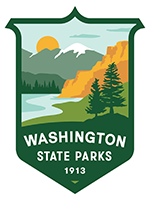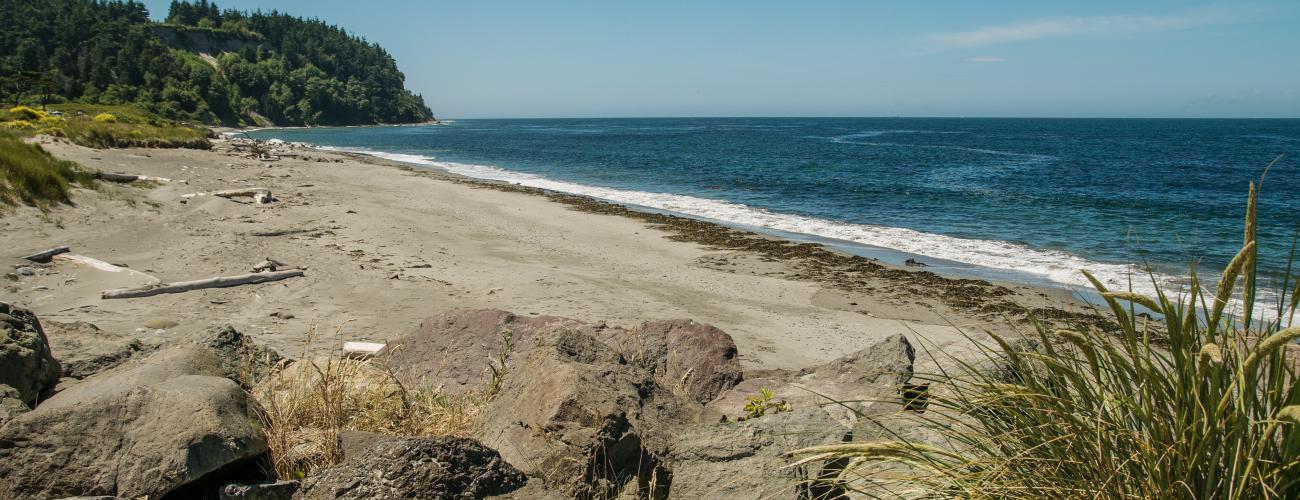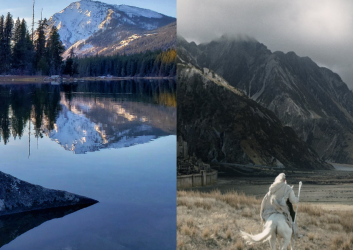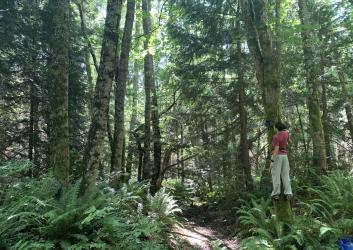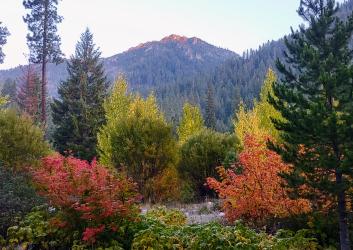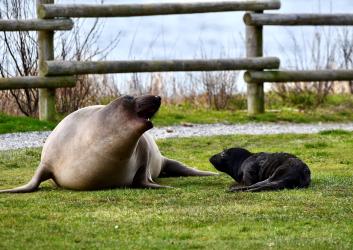Fort Worden finds lead to “mammoth” discoveries, “wooly” situations
Walks on the beach are a common activity at Fort Worden, but a February stroll at low tide turned out to be anything but ordinary for one Port Townsend couple. These locals noticed an interesting rock on the beach, but on closer examination, they realized they’d stumbled onto a “massive” discovery.
They quickly recognized their find was the bone of a giant mammal from the distant past.
Unfortunately, they did not notify Fort Worden staff. They took the bone and enlisted friends from their local geological society to help identify the species. Ultimately, they shared photos of the bone and the site with friends and professionals at the Burke Museum.
Little did they know, they had stumbled upon a “mammoth” discovery.
Serendipity lends a hand
About a month later, I rewarded a cute yellow Labrador with a Bark Ranger bandana. By sheer happenstance, the pup’s owner and I began talking about local geology, and she asked if I’d heard about the North Beach discovery. I had not. I gave her my business card and asked her to connect me with the folks who had found the bone.
Thankfully, she followed through! I was able to take possession of the bone and record important data, including location of its discovery, tide zone information and copies of the photographs the couple had taken, including this one at left, with a foot for scale. I contacted Parks Curator of Collections, Alicia Woods, and through a relay of park staff, we were able to get the bone in her hands.
Alicia has since been working to slowly dry and preserve the bone. Fortunately, the bone was kept in saltwater for the month it was out of our hands. Otherwise, it would have dried out and crumbled.
Considering how this story began — and how it could have gone — the bone is in remarkably good condition.
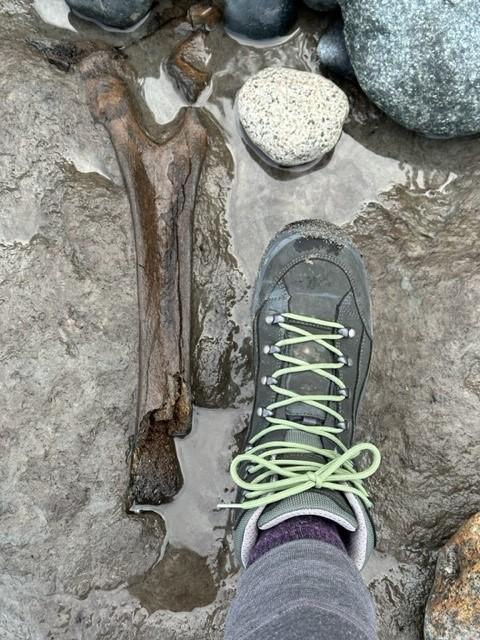
What do you think: mammoth or mastodon vertebra?
Though we aren’t yet sure of the species, we believe this is a spinal vertebra fragment from an extinct mammoth or mastodon. The only differences between the two mammals are size and thickness of their vertebrae. Our Eastern Region Archaeologist, Sarah Dubois, who specializes in faunal (animal) analysis, will take a closer look and measure the fragment with calipers.
Check out these 3D models of a mammoth skeleton and a mastodon vertebra.
But wait, there’s more! The Labrador’s owner was kind enough to tell me that a Columbian mammoth tooth had been discovered on Fort Worden’s beach some years back. She wasn’t sure where the tooth ended up, so I started doing some digging of my own (metaphorically speaking). I first asked senior park staff if they recalled this find. A few vaguely remembered something, but most did not. My hopes were fading.
A different take on the Tooth Fairy...
Again, by sheer coincidence, I received an email from the Port Townsend Marine Science Center (PTMSC) inviting me to participate in a spring break program. It just so happened they were planning a program on fossils… and, you guessed it! In their collection, they had a mammoth tooth. I asked them to check their records to see if this tooth was discovered on North Beach at Fort Worden. Sure enough, this was the missing tooth! A visitor brought it to PTMSC’s natural history museum back in 2019. To them, it seemed the natural place for this specimen.
I told PTMSC staff about the bone discovered in February and the process for turning in artifacts and specimens found in state parks. They understood and graciously gave us the tooth (pictured at left).
Alicia is now working to preserve the tooth and the bone. Hopefully soon we will have a new interpretive program at Fort Worden about ice age environments and the animals that once roamed the area.
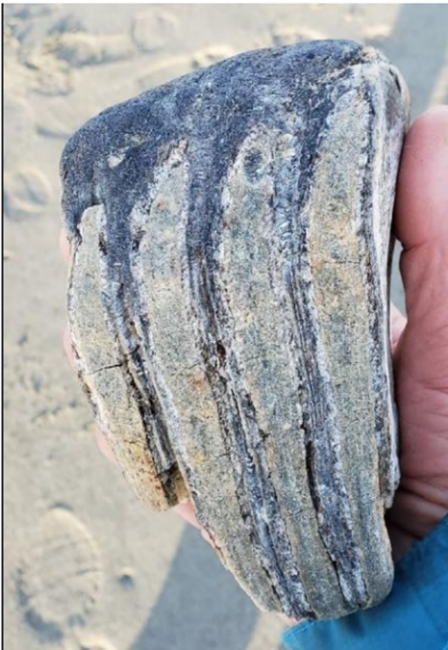
What to do if you find a fossil in a park
State Parks extends gratitude to all the folks who tried to do right by these two magnificent finds. Removing such specimens, however, can destroy our history.
Animal remnants like bones and teeth are delicate and need to be handled by experts. It is, in fact, better to let them wash away than to take them and risk their destruction.
If you find something you think might be part of an animal from the distant past, please track down park staff and email artiFACT@parks.wa.gov. Please do not post it on social media.
Originally published August 01, 2023
